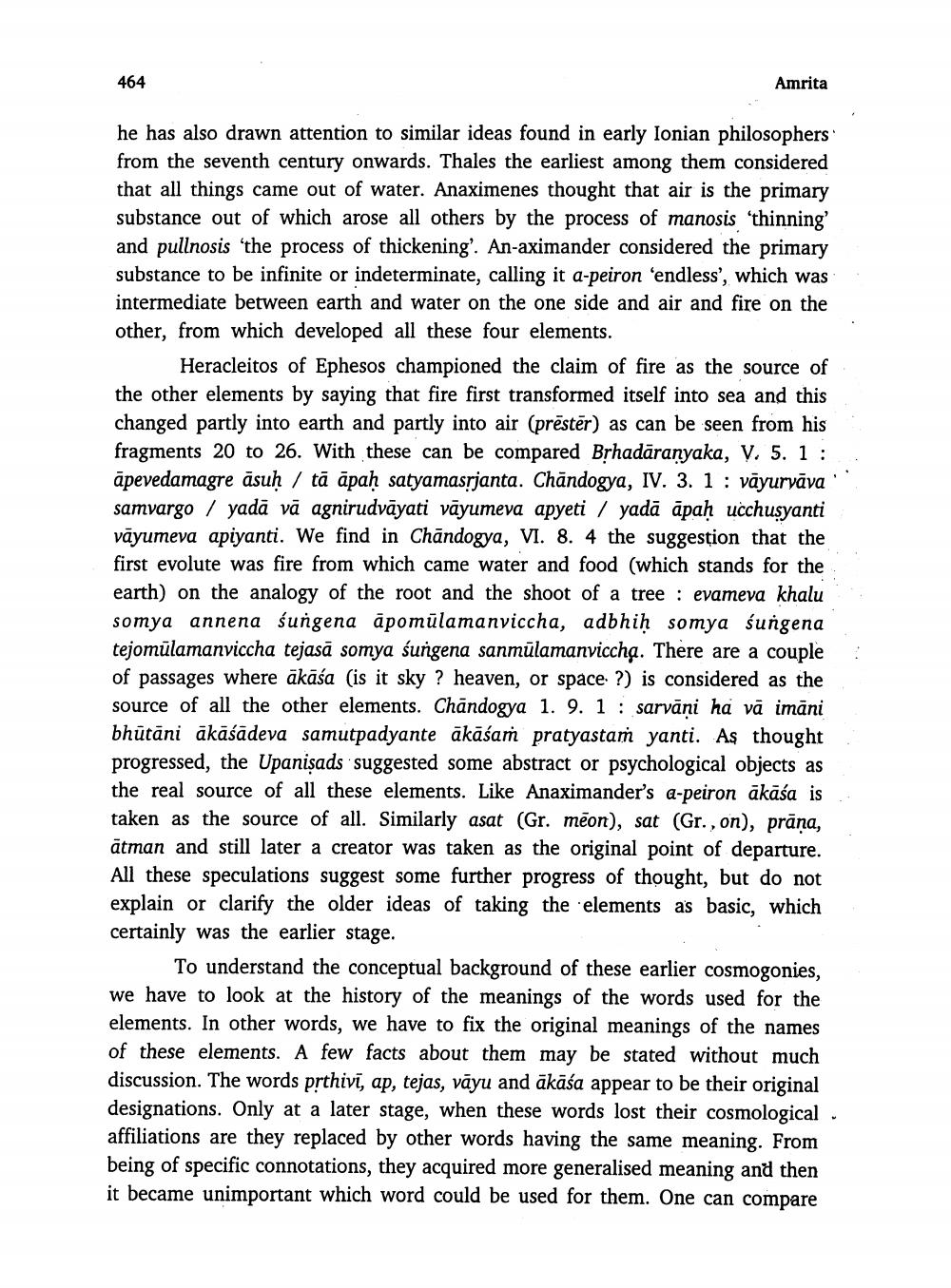________________
464
Amrita
he has also drawn attention to similar ideas found in early Ionian philosophers from the seventh century onwards. Thales the earliest among them considered that all things came out of water. Anaximenes thought that air is the primary substance out of which arose all others by the process of manosis 'thinning and pullnosis 'the process of thickening'. An-aximander considered the primary substance to be infinite or indeterminate, calling it a-peiron ‘endless', which was intermediate between earth and water on the one side and air and fire on the other, from which developed all these four elements.
Heracleitos of Ephesos championed the claim of fire as the source of the other elements by saying that fire first transformed itself into sea and this changed partly into earth and partly into air (prēstēr) as can be seen from his fragments 20 to 26. With these can be compared Brhadāranyaka, V. 5. 1: . āpevedamagre äsuḥ / tā āpaḥ satyamassjanta. Chandogya, IV. 3. 1 : vāyurvāva'', samvargo / yada va agnirudvāyati vayumeva apyeti / yadā āpaḥ ucchusyanti vāyumeva apiyanti. We find in Chāndogya, VI. 8. 4 the suggestion that the first evolute was fire from which came water and food (which stands for the earth) on the analogy of the root and the shoot of a tree : evameva khalu somya annena śungena āpomūlamanviccha, adbhiḥ somya sungena tejomālamanviccha tejasā somya sungena sanmūlamanviccha. There are a couple of passages where ākāśa (is it sky ? heaven, or space ?) is considered as the source of all the other elements. Chandogya 1. 9. 1 : sarvāni ha vā imani bhūtāni ākāśādeva samutpadyante ākāśam pratyastam yanti. As thought progressed, the Upanişads suggested some abstract or psychological objects as the real source of all these elements. Like Anaximander's a-peiron ākāśa is. taken as the source of all. Similarly asat (Gr. mēon), sat (Gr., on), prāna, ātman and still later a creator was taken as the original point of departure. All these speculations suggest some further progress of thought, but do not explain or clarify the older ideas of taking the elements as basic, which certainly was the earlier stage.
To understand the conceptual background of these earlier cosmogonies, we have to look at the history of the meanings of the words used for the elements. In other words, we have to fix the original meanings of the names of these elements. A few facts about them may be stated without much discussion. The words prthivī, ap, tejas, vāyu and ākāśa appear to be their original designations. Only at a later stage, when these words lost their cosmological affiliations are they replaced by other words having the same meaning. From being of specific connotations, they acquired more generalised meaning and then it became unimportant which word could be used for them. One can compare




